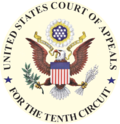 Offering payroll cards for the payment of employee wages may be a viable, cost effective alternative to paper paychecks. It also can be an attractive offering for workers who do not have a checking or savings account at a bank or other financial institution. Employers must be aware, however, that certain federal and state laws regulate payroll card accounts. The Consumer Financial Protection Bureau (CFPB) recently issued Bulletin 2013-10 describing the application of the Electronic Fund Transfer Act (EFTA) and Regulation E, which implements the EFTA, to payroll card accounts. Here are some tips for keeping your payroll card program in compliance with these laws.
Offering payroll cards for the payment of employee wages may be a viable, cost effective alternative to paper paychecks. It also can be an attractive offering for workers who do not have a checking or savings account at a bank or other financial institution. Employers must be aware, however, that certain federal and state laws regulate payroll card accounts. The Consumer Financial Protection Bureau (CFPB) recently issued Bulletin 2013-10 describing the application of the Electronic Fund Transfer Act (EFTA) and Regulation E, which implements the EFTA, to payroll card accounts. Here are some tips for keeping your payroll card program in compliance with these laws.
- No Mandatory Use of Payroll Cards. You may not require that employees be paid on a payroll card from a particular institution. You may offer payroll cards as a method of wage payment as long as you offer an alternative method, such as direct deposit to an account of the employee’s choosing or paper paychecks. Acceptable methods of paying wages typically are governed by state wage payment laws.
- Disclosure of Fees, Transfers, and Other Payroll Card Requirements. Employees to be paid on a payroll card are entitled to be informed of any fees, limitations or requirements related to making electronic fund transfers with the card that will be imposed by the financial institution who issues the card. Clear, understandable written disclosures must be provided to cardholders in a form that the consumer may keep.
- Account History Must Be Accessible. The payroll card issuer must make each cardholder’s account history available, either through periodic statements, telephone balance inquiries, internet/web-based account history, or by providing 60 days of written account history upon request of the cardholder.
- Cardholder Liability for Unauthorized Use Must Be Limited. Payroll cardholders are entitled to limited liability protections for the unauthorized use of their payroll cards, however they must report any unauthorized transfers in a timely period.
- Cardholders’ Rights to Error Resolution. Upon the timely report of an error regarding a payroll card account, financial institutions must respond to the cardholder. In order to ensure a response, the cardholder must report an error within 60 days of either accessing his or her payroll card account history or receiving a written account history containing the error, whichever is earlier, or within 120 days after the alleged error occurred.
In addition to the federal payroll card laws, state wage payment laws often regulate when and how payroll cards may be used to pay employee wages. For example, in Colorado, employers may deposit employee wages on a payroll card provided the employee may access the full amount on the card for free at least once during the pay period, or the employee is given the choice to receive their pay through other means, such as direct deposit to an account of the employee’s choosing or a paycheck. Be certain to check the wage payment laws in the states in which you operate to ensure compliance with any state payroll card requirements.
Disclaimer: This article is designed to provide general information on pertinent legal topics. The statements made are provided for educational purposes only. They do not constitute legal advice and are not intended to create an attorney-client relationship between you and Holland & Hart LLP. If you have specific questions as to the application of the law to your activities, you should seek the advice of your legal counsel.



